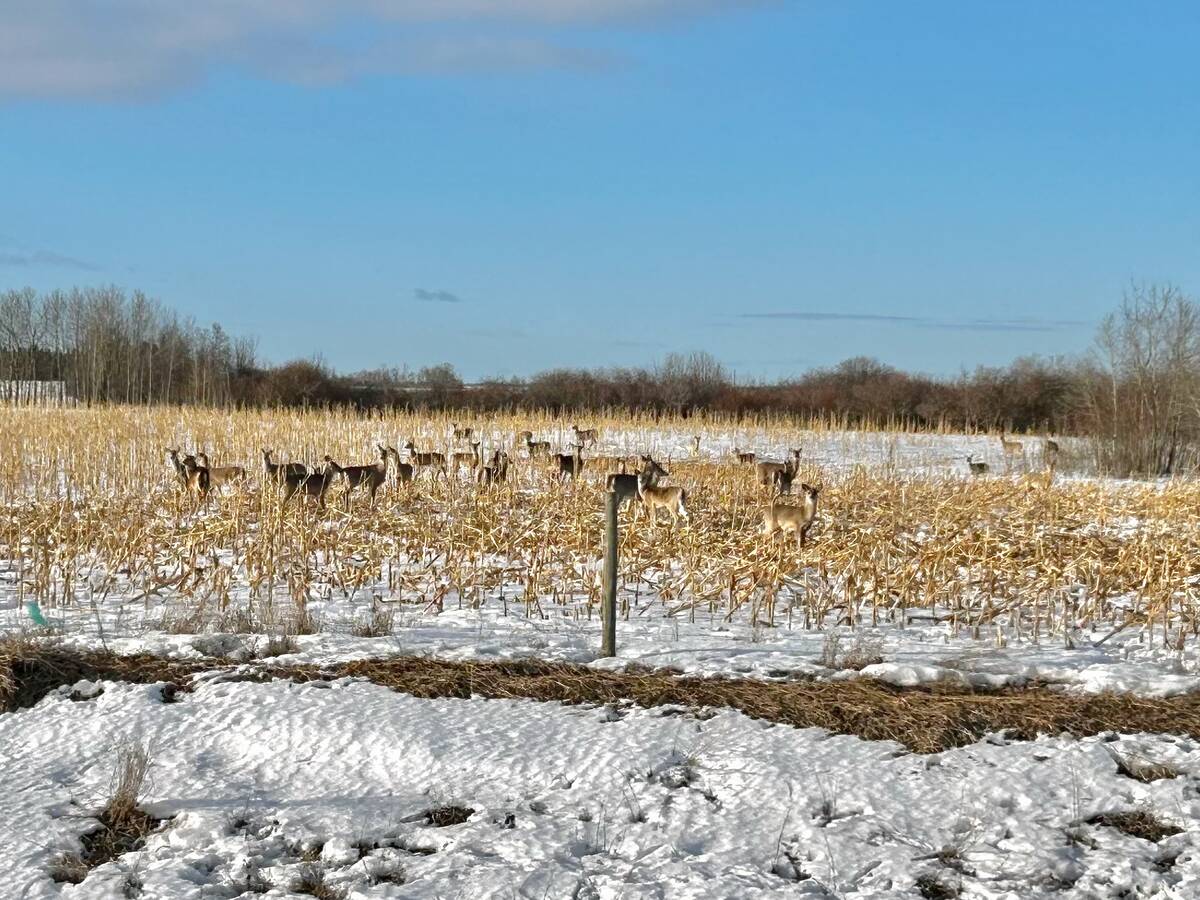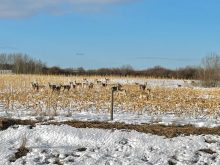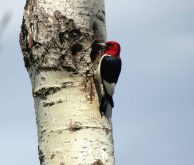The province’s chief veterinary authority is watching this year’s arrival of migratory birds with a wary eye.
This year, it worries, those birds may come with a side order of highly pathogenic avian flu (H5N1).
As of March 31, the U.S. Animal Plant Health Inspection Service (APHIS) had confirmed avian influenza at 95 farm sites, encompassing states such as South Dakota, Iowa, Minnesota, and several eastern states. North Dakota has seen one case in its central region, confirmed March 29 in a small flock of backyard chickens.
Read Also

Manitoba launches CWD tracking tool
A newly launched digital dashboard allows hunters to track where chronic wasting disease has been confirmed in Manitoba
A flight path record of the migratory birds now appearing on Manitoba’s landscape includes many of those same states, Dr. Glen Duizer of the office of the chief veterinary officer (CVO) noted.
“We are monitoring that situation very closely,” he said, also noting the wealth of poultry operations within states in line with the province.
“We are watching what is happening in the states directly south of us.”
He said populations of concern run the gamut from small-flock populations to large-scale operations and wildlife.
Before this year, Canada’s last reported issue with highly pathogenic avian flu was in 2015 in Ontario. Manitoba has not seen the virus in a domestic flock since 2010.
The Canadian poultry sector echoed Duizer’s concerns.
“We do know that avian influenza comes from migratory birds,” said Lisa Bishop-Spencer, representative for the Chicken Farmers of Canada.
- More on biosecurity: PED outbreak hits record levels
According to the Canadian Food Inspection Agency (CFIA), nine Canadian farms have been confirmed positive for the virus since December 2021. Canada’s first case was discovered on the Avalon Peninsula of Newfoundland and Labrador (a region that now counts three cases, with the most recent found March 17). In February, the CFIA discovered that a commercial poultry flock in western Nova Scotia had likewise come down with the virus. Another case, of the same strain discovered in the Avalon Peninsula and in the CFIA’s wild bird surveillance would be found in the same region a little over a week later, followed by a third case in the south of the province.
In late March, the CFIA announced that the virus had made its way to commercial poultry operations in southern Ontario. Three farms had found positive in short order as of March 31.
The agency has pegged northward migrating birds as the most likely suspect in the Canadian cases.
The CFIA has said that impacted farms are under quarantine, while control zones are in force in the surrounding area. The agency has put controls on animal movements in reaction to the infections, as well as pushing increased on-farm measures and running surveillance testing in the area. Flock destruction, disposal and facility cleaning are also in the CFIA’s avian influenza playbook.
“(Farmers) already have very strict biosecurity in place, but they’re being asked to increase that,” Bishop-Spencer said. “Within the control zones, the area that CFIA identifies, there are movement controls in place… farmers are doing things like sanitizing wheel wells as vehicles enter and leave the property, changing footwear when visiting premises, of course, limiting those premises to appointment only and continuing to monitor bird health.”
Looking south
Much of Manitoba’s concern, however, stems from south of the Canada-U.S. border, rather than from the east.
Chicken and turkey producers in the U.S. have been embroiled in a growing number of highly pathogenic avian flu outbreaks since Feb. 8. In late March, the U.S. Department of Agriculture started advising producers to keep birds inside, in order to limit contact with potential carriers, and to tighten biosecurity. Iowa, a cornerstone of the U.S. egg sector, has also suspended the showing of live birds at fairs or other such events.
On March 28, U.S. farm media publication Ag Insider reported that over 15.5 million domestic birds in the country had either been claimed by the virus or destroyed in a bid to curb spread.
The Manitoba CVO is actively tracking wild bird trends, as well as keeping an eye on the Canadian response in other jurisdictions, Duizer said.
Within Canada, there have not been any wild H5N1 detections close to Manitoba so far, he added.
Plans for a local case, however, are underway, he said.
The CVO has reached out to the CFIA as well as potentially impacted farm sectors to gauge “areas of risk that they’re concerned about and do some work back and forth with them,” Duizer said.
The Manitoba Chicken Producers did not respond to requests for an interview as of press time.
National response
Bishop-Spencer said the Canadian cases were not totally unexpected, given the time of year and warm, wet weather in the impacted areas and results of the CFIA’s wild bird surveillance.
In Ontario, she noted, the sector was given a heads-up of the risk after a wild bird tested positive for the virus, in the same area where it was later found in a commercial flock.
The Feather Board Command Centre — Ontario’s value chain-spanning industry group — has also been critical in that province’s response, she said.
“Every year, we know that there’s an increased risk, depending on where you are in the country, from January until May,” she said. “When we started hearing about the increased cases in the United States, and you can track them moving north, we immediately alerted out provincial boards and our provincial boards alerted their farmers.”
The CFIA announced restrictions against 10 U.S. states in reaction to American outbreaks. The restrictions suspend import of any live animals, feathers, raw poultry, poultry products or byproducts from Delaware, Indiana, Iowa, Kansas, Kentucky, Maryland, Missouri, Nebraska, South Dakota or Wisconsin.
Most poultry and egg production is for the domestic market and relatively little is imported, Bishop-Spencer noted, limiting any potential economic fallout from trade. There have been no supply issues at Canadian processors thus far, she said.
















